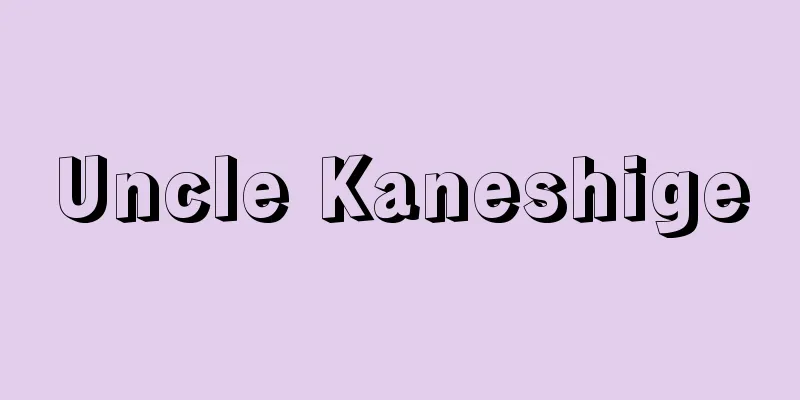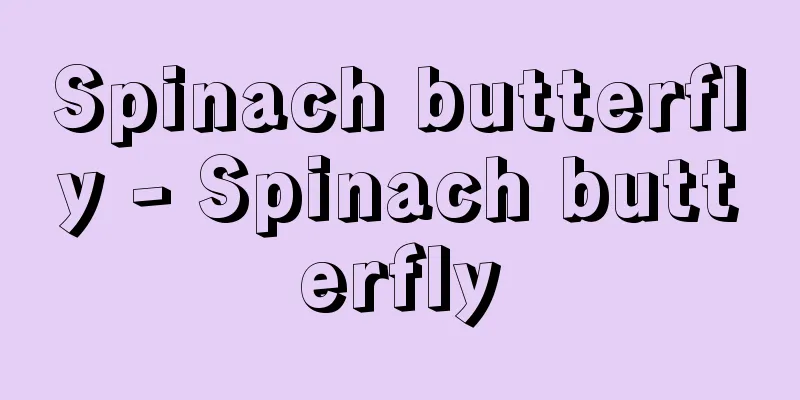Night soil treatment

|
The collection and treatment of human waste. The amount of human waste excreted per day is about 1-1.5 liters, but this varies depending on body weight, diet, and climate. For Japanese people, the average characteristics of human waste per liter are BOD5 (biochemical oxygen demand) 13.5 grams, COD (chemical oxygen demand) 7.0 grams, suspended solids 21.0 grams, total nitrogen 5.0 grams, chloride ions 5.5 grams, phosphate 1.0 gram, general bacteria count 105-107 , and E. coli count 103-104 . In Japan, the practice of using night soil for agricultural purposes has been developed since ancient times, but after the Second World War, the practice was discontinued due to the introduction of chemical fertilizers and problems with parasites caused by night soil, and serious problems with its treatment and disposal arose. As the construction of sewerage systems was delayed, the technology of collecting raw night soil from each household using vacuum trucks spread, but at first, it was mainly dumped in the ocean. However, inland and urban municipalities became required to treat night soil, and Japan developed its own treatment technology. In the field of sewage treatment, technology for treating sewage sludge by anaerobic digestion had been developed, and this method was applied to treat night soil anaerobically. However, high BOD and other substances remained in the treated water, so activated sludge treatment, which is one of the aerobic treatment methods, was added, and this method became the standard night soil treatment method in Japan and spread throughout the country. Other treatment methods, such as anaerobic digestion + trickling filter method and aerobic digestion + activated sludge method, have been developed, but when treated water is discharged into irrigation channels for rice cultivation, freshwater fishing is conducted, or closed water bodies such as lakes and marshes, it becomes necessary to remove nitrogen such as ammonia. For this reason, a major technological innovation occurred from the conventional method aimed at removing BOD to a treatment method that simultaneously removes BOD and nitrogen. The principle of this new technology was born from research on sewage treatment in Europe and the United States, but the Japanese field of human waste treatment was the first to put it to practical use. This method improves on the activated sludge method and combines denitrification reaction (BOD reacts with nitrate and nitrite to produce nitrogen gas) and nitrification reaction (oxidization of ammonia to nitrite and nitrate). Furthermore, when phosphorus needs to be removed to prevent eutrophication of water bodies, a coagulation and sedimentation treatment is added using chemicals. In addition, the treated water is colored brown, so it is decolorized by ozone treatment, eliminating the visual resistance to human waste treatment. Nowadays, when rebuilding or renovating a sewage treatment facility, attention is paid to environmental measures (bad odors, noise, scenery) and advanced treatment is being implemented. Japan's level of sewage treatment is more advanced than that of sewage treatment, and it is in a uniquely developed state in the world. Only a few countries, such as South Korea, Taiwan, China, and India, have implemented sewage treatment systems like Japan, while other countries do not treat sewage and are faced with the issue of how to implement sewage treatment. [Saburo Matsui] Source: Shogakukan Encyclopedia Nipponica About Encyclopedia Nipponica Information | Legend |
|
人間の排泄(はいせつ)物である屎尿を集めて処理すること。1人1日当りの屎尿排泄(はいせつ)量は約1~1.5リットル程度であるが、体重、食事内容、気候風土によって変化する。日本人の場合、屎尿の平均的性状は、1リットル当りBOD5(生物化学的酸素要求量)13.5グラム、COD(化学的酸素要求量)7.0グラム、浮遊物量21.0グラム、総窒素5.0グラム、塩素イオン5.5グラム、リン酸1.0グラム、一般細菌数105~107個、大腸菌数103~104個となる。 日本では屎尿を農業還元利用する方法が古来より発達してきたが、第二次世界大戦後、化学肥料の導入や、屎尿還元による寄生虫問題などから農業還元が中止されると同時に、処理処分の深刻な問題が発生した。下水道整備が遅れていたために、バキューム車などで各戸から生屎尿を回収する技術が普及したが、最初は海洋投棄処分を中心に行った。しかし、内陸部の自治体や都市部の自治体は屎尿処理が必要となり、日本で独自に処理技術を発達させてきた。下水処理の分野では下水汚泥を嫌気性消化法により処理する技術が発達していたが、この方法を応用して屎尿を嫌気性処理した。しかし、処理水になお高いBODなどが残るので、さらに好気性処理方法の一つである活性汚泥処理が付加されるようになり、この方法が日本の標準的屎尿処理として全国に普及した。ほかに嫌気性消化+散水濾床(ろしょう)法、好気性消化+活性汚泥法などの処理法も開発されたが、処理水の放流先が稲作のための農業用水路であったり、淡水漁業が行われていたり、湖沼などの閉鎖性水域であると、アンモニアなどの窒素除去が必要となってきた。このためにBOD除去を目的とする従来の方法から、BODと窒素を同時除去する処理法へと大きな技術革新が生じた。この新しい技術の原理は、欧米での下水処理の研究から生み出されたものであるが、日本の屎尿処理分野がその実用化をいち早く進めてきた。この方法は、活性汚泥法を改良して脱窒素反応(BODと硝酸、亜硝酸が反応して窒素ガスを生成)と硝化反応(アンモニアを亜硝酸、硝酸に酸化)を組み合わせたものである。さらに水域の富栄養化防止のためにリン除去の必要がある場合、薬品を利用して凝集沈殿処理を付加している。また処理水が茶褐色に着色するので、オゾン処理で脱色し、見た目からの屎尿処理に対する抵抗感をなくしている。 現在では、屎尿処理施設を新しく改築する場合、環境対策(悪臭、騒音、景観)に注意が払われ、高度処理が実施されるようになった。日本の屎尿処理の水準は下水処理のそれより高度化しており、世界中でも特異に発達した状況にある。日本と同じように屎尿処理を実施している国は韓国、台湾、中国、インドなどの一部の国で、他の国々は屎尿処理はせず、下水処理をどのように実施するかという問題になっている。 [松井三郎] 出典 小学館 日本大百科全書(ニッポニカ)日本大百科全書(ニッポニカ)について 情報 | 凡例 |
<<: Signoria system - Signoria (English spelling)
>>: Sinyavskii, Andrei Donatovich
Recommend
Abeno Oji Shrine - Abeno Oji Shrine
...To the north of Tennoji Station are Tennoji Pa...
Mamaia
…It is currently the largest port in Romania, acc...
Toxostoma
…They are generally similar in appearance to mock...
Commonwealth of Nations
At the beginning of the 20th century, the Commonwe...
Ripening - Tsuijuku
〘 noun 〙 To harvest fruits earlier than the approp...
Light emitting diode - Hakkodaiodo (English spelling) light emitting diode
A diode that emits light when a current is passed...
Bayer, KJ (English spelling)
…There are α type (trigonal crystal system), β ty...
Farmers' Network - Hyakushoami
Urakata peasants = fishermen, a form of net fishin...
Dressing up - Benpuku
[Noun] Crowns and clothing worn by nobles in forma...
Hot - Hot
...The fibers of the bark are very strong, and th...
Fechner, E.
…Today, Arthur Kaufmann (1923- ) is a representat...
Slide - Slide
A fixed exercise playground equipment for infants ...
Water supply equipment - water supply device
A facility that supplies drinking water and indust...
Collection of Eight Generations
Of the 21 imperially commissioned anthologies of w...
juice
Juice is the liquid squeezed from fruits and veget...









